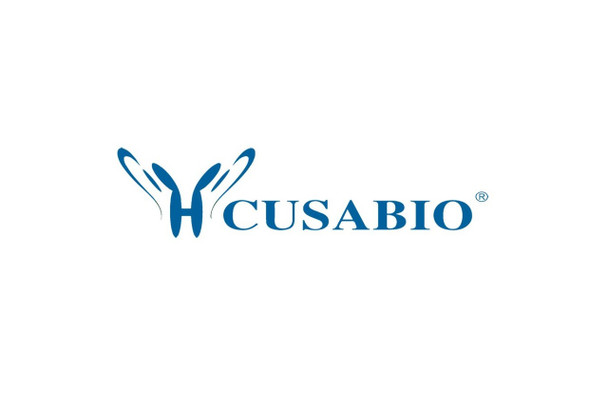Cusabio Rattus norvegicus Recombinants
Recombinant Rat Ephrin-A5 (Efna5) | CSB-EP007464RA
- SKU:
- CSB-EP007464RA
- Availability:
- 13 - 23 Working Days
Description
Recombinant Rat Ephrin-A5 (Efna5) | CSB-EP007464RA | Cusabio
Alternative Name(s): AL-1EPH-related receptor tyrosine kinase ligand 7 ;LERK-7
Gene Names: Efna5
Research Areas: Others
Organism: Rattus norvegicus (Rat)
AA Sequence: QDPGSKVVADRYAVYWNSSNPRFQRGDYHIDVCINDYLDVFCPHYEDSVPEDKTERYVLYMVNFDGYSACDHTSKGFKRWECNRPHSPNGPLKFSEKFQLFTPFSLGFEFRPGREYFYISSAIPDNGRRSCLKLKVFVRPTNSCMKTIGVRDRVFDVNDKVENSLEPADDTVHESAEPSRGEN
Source: E.coli
Tag Info: N-terminal 6xHis-tagged
Expression Region: 21-203aa
Sequence Info: Full Length of Mature Protein
MW: 25.2 kDa
Purity: Greater than 90% as determined by SDS-PAGE.
Relevance: Cell surface GPI-bound ligand for Eph receptors, a family of receptor tyrosine kinases which are crucial for migration, repulsion and adhesion during neuronal, vascular and epithelial development. Binds promiscuously Eph receptors residing on adjacent cells, leading to contact-dependent bidirectional signaling into neighboring cells. The signaling pathway downstream of the receptor is referred to as forward signaling while the signaling pathway downstream of the ephrin ligand is referred to as reverse signaling. Induces compartmentalized signaling within a caveolae-like mbrane microdomain when bound to the Extracellular domain of its cognate receptor. This signaling event requires the activity of the Fyn tyrosine kinase. Activates the EPHA3 receptor to regulate cell-cell adhesion and cytoskeletal organization. With the receptor EPHA2 may regulate lens fiber cells shape and interactions and be important for lens transparency maintenance. May function actively to stimulate axon fasciculation. The interaction of EFNA5 with EPHA5 also mediates communication between pancreatic islet cells to regulate glucose-stimulated insulin secretion. Cognate/functional ligand for EPHA7, their interaction regulates brain development modulating cell-cell adhesion and repulsion .
Reference: Cloning of AL-1, a ligand for an Eph-related tyrosine kinase receptor involved in axon bundle formation.Winslow J.W., Moran P., Valverde J., Shih A., Yuan J.Q., Wong S.C., Tsai S.P., Goddard A., Henzel W.J., Hefti F., Beck K.D., Caras I.W.Neuron 14:973-981(1995)
Storage: The shelf life is related to many factors, storage state, buffer ingredients, storage temperature and the stability of the protein itself. Generally, the shelf life of liquid form is 6 months at -20?/-80?. The shelf life of lyophilized form is 12 months at -20?/-80?.
Notes: Repeated freezing and thawing is not recommended. Store working aliquots at 4? for up to one week.
Function: Cell surface GPI-bound ligand for Eph receptors, a family of receptor tyrosine kinases which are crucial for migration, repulsion and adhesion during neuronal, vascular and epithelial development. Binds promiscuously Eph receptors residing on adjacent cells, leading to contact-dependent bidirectional signaling into neighboring cells. The signaling pathway downstream of the receptor is referred to as forward signaling while the signaling pathway downstream of the ephrin ligand is referred to as reverse signaling. Induces compartmentalized signaling within a caveolae-like membrane microdomain when bound to the extracellular domain of its cognate receptor. This signaling event requires the activity of the Fyn tyrosine kinase. Activates the EPHA3 receptor to regulate cell-cell adhesion and cytoskeletal organization. With the receptor EPHA2 may regulate lens fiber cells shape and interactions and be important for lens transparency maintenance. May function actively to stimulate axon fasciculation. The interaction of EFNA5 with EPHA5 also mediates communication between pancreatic islet cells to regulate glucose-stimulated insulin secretion. Cognate/functional ligand for EPHA7, their interaction regulates brain development modulating cell-cell adhesion and repulsion (By similarity).
Involvement in disease:
Subcellular Location: Cell membrane, Lipid-anchor, GPI-anchor, Membrane, caveola, Lipid-anchor, GPI-anchor
Protein Families: Ephrin family
Tissue Specificity: Expressed in brain, heart, placenta and lung.
Paythway:
Form: Liquid or Lyophilized powder
Buffer: If the delivery form is liquid, the default storage buffer is Tris/PBS-based buffer, 5%-50% glycerol. If the delivery form is lyophilized powder, the buffer before lyophilization is Tris/PBS-based buffer, 6% Trehalose, pH 8.0.
Reconstitution: We recommend that this vial be briefly centrifuged prior to opening to bring the contents to the bottom. Please reconstitute protein in deionized sterile water to a concentration of 0.1-1.0 mg/mL.We recommend to add 5-50% of glycerol (final concentration) and aliquot for long-term storage at -20?/-80?. Our default final concentration of glycerol is 50%. Customers could use it as reference.
Uniprot ID: P97605
HGNC Database Link: N/A
UniGene Database Link: UniGene
KEGG Database Link: KEGG
STRING Database Link: STRING
OMIM Database Link: N/A









